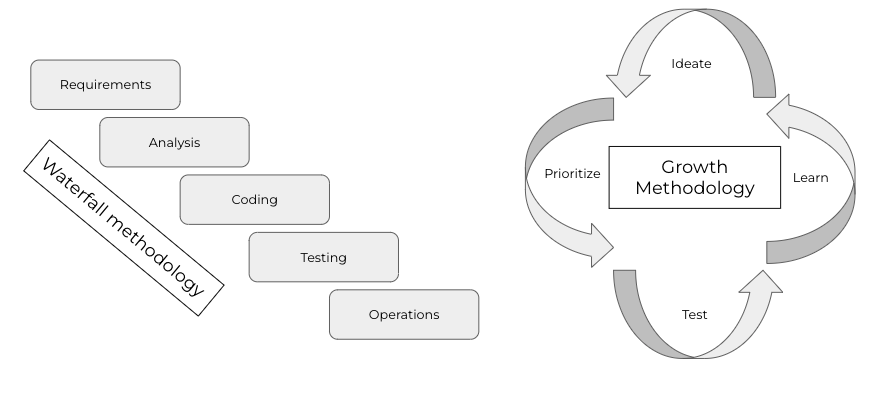
Regardless of which methodology description you choose, all of them are basically systematized frameworks intended to organize a team around a specific goal, facilitate its productivity, its tracking, execution, and management.
However, when to apply each may not be crystal clear at first sight so we will break it all down the similarities, differences, and when each methodology should be applied.
The waterfall method: is a linear or sequential approach to project management and works based on fixed dates, requirements, and outcomes.
The growth method: is a non-linear approach to project management based on validating the hypothesis through a consistent process of testing and experimentation.
So, before deciding which of these methods best suits your next project, you should be asking yourself the following questions:
If the final delivery of your project is something that you clearly know how it’s going to look like, stop here and go with the waterfall. You know precisely what resources this will consume, the time you will need, and the resources it will demand, there are no shifts along the project nor any iteration needed — it’s an outcome-based project.
If you are not 100% sure what the final delivery will look like, nor the number of iterations and resources and tests you will have to execute, then, it’s an output-based project and the growth methodology will best suit you.
In the waterfall methodology, the next stage of development only starts when the previous one has ended — it’s a linear approach.
In the growth methodology, multiple tests can be developed all at once, the more the better. The only limitation is that one does not affect the result of the other — it’s a non-linear approach.
While the former requires the team to have well-defined deadlines and specs before getting started, the latter is based on constant iteration, feedback loops, and changes in the course of the project are expected and encouraged.
When you get a third-party involved into the project, you end up adding an unstable variables into the process, which doesn’t sit well with the clearly defined scope of the waterfall.
If all the dependencies of the project are internal (team members participating, deliveries, deadlines, resources required), the waterfall can be used. If there are external dependencies (traffic, users, customers, events), the growth methodology will be better suited.
The methodologies are not exclusionary. One company can (and probably should) have teams working on different projects using different methodologies. For example, the waterfall could be used for product development, for example, while the growth team could be working on improving the adoption or conversion of new features.



